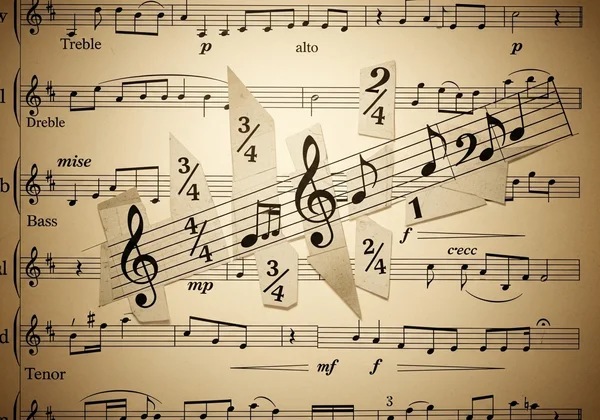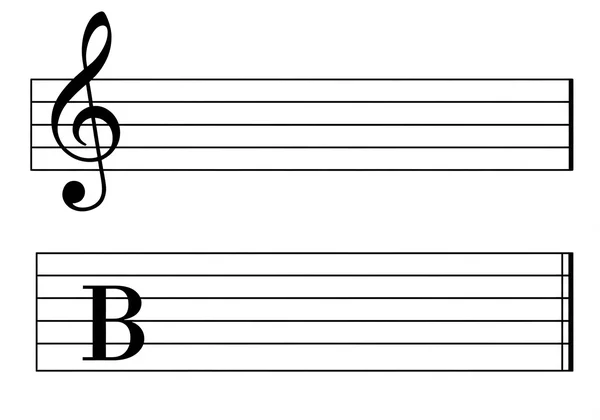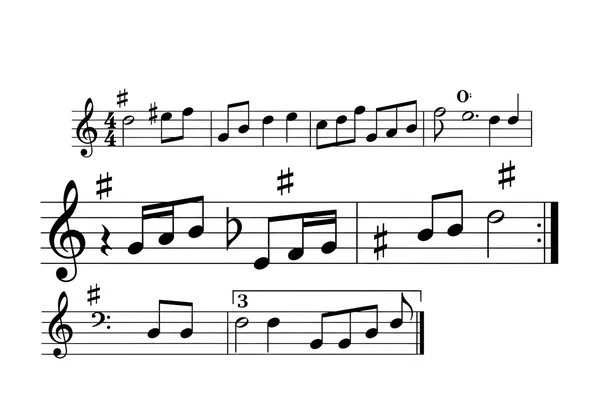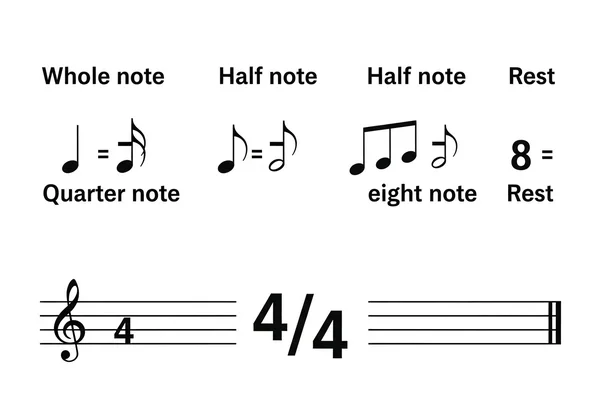Master Music Theory & Reading Sheet Music: Essential Staff Paper Guide
Master the universal language of music! Are you an aspiring musician, student, or simply curious about those mysterious symbols on a page? This comprehensive guide will demystify music theory basics, providing a clear, foundational understanding of sheet music. How to make your own staff paper is a question that often comes up, but with the right tools, you can get started in seconds. Get ready to transform your musical ideas into written form with the help of our free printable staff paper resources.
Reading music is like learning a new alphabet. At first, it seems complex, but once you understand the core components, a whole new world of expression opens up. This guide will walk you through the essential elements, from the staff and clefs to notes, rhythms, and signatures. By the end, you'll have the confidence to start sight-reading and notating your own melodies. The best way to learn is by doing, which means you'll need plenty of blank sheet music for practice.

The Building Blocks: Understanding the Musical Staff
Before you can read a single note, you need to understand the canvas where music is written: the staff (or stave). Think of it as the framework that gives every symbol its meaning. All written music is built upon this fundamental structure, making it the perfect starting point for your journey.
What is the Music Staff and Its Role?
The music staff is a set of five horizontal lines and four spaces. Each line and each space represents a different musical pitch. Notes are placed on these lines or in these spaces to indicate what pitch to play. The pitch ascends as you move up the staff; a note on a higher line is a higher pitch than a note on a lower line.
This simple yet brilliant system is the foundation of Western musical notation. To truly grasp how it works, you'll need to practice drawing notes on the lines and spaces. Getting comfortable with this layout is the first crucial step. You can practice this right away by getting some free staff paper to fill in.
Clefs Explained: Treble, Bass, Alto, and Tenor
A clef is a symbol placed at the very beginning of the staff that determines the pitch of the notes that follow. It acts as a reference point, telling you which note corresponds to which line or space. The two most common clefs are the Treble and Bass clefs.
- Treble Clef (G-Clef): This is the most recognizable clef. The curl of the clef wraps around the second line from the bottom, indicating that this line is the note G above middle C. It's used for higher-pitched instruments like the flute, violin, trumpet, and the right hand of the piano.
- Bass Clef (F-Clef): This clef is used for lower-pitched instruments like the cello, bass guitar, trombone, and the left hand of the piano. The two dots of the clef surround the fourth line from the bottom, marking it as the note F below middle C.
While less common, you might also encounter the Alto and Tenor clefs (C-clefs), which are primarily used by instruments like the viola and bassoon. Understanding clefs is essential because they give context to everything else on the page.

How to Read Music Notes: Pitch and Notation
Once you understand the staff and clefs, it's time to learn the notes themselves. This section breaks down how to identify notes by their position and how modifications called accidentals can alter their pitch. This is the core skill in any sheet music guide.
Mastering Note Names and Positions on the Staff
Notes are named after the first seven letters of the alphabet: A, B, C, D, E, F, and G. This sequence repeats as you move up or down the staff. To remember the note names, musicians often use mnemonics.
For the Treble Clef:
- Lines (from bottom to top): Every Good Boy Deserves Fudge.
- Spaces (from bottom to top): F-A-C-E.
For the Bass Clef:
- Lines (from bottom to top): Good Boys Do Fine Always.
- Spaces (from bottom to top): All Cows Eat Grass.
Sometimes notes fall above or below the staff. In these cases, we use small lines called ledger lines to extend the staff. You can begin practicing these note names on some fresh manuscript paper.
Accidentals: Sharps, Flats, and Naturals
Accidentals are symbols that alter the pitch of a note by a half step. They are placed immediately to the left of a note and apply to that note for the remainder of the measure.
- Sharp (♯): Raises a note's pitch by one half step.
- Flat (♭): Lowers a note's pitch by one half step.
- Natural (♮): Cancels a previous sharp or flat, returning the note to its "natural" pitch.
Understanding accidentals is crucial for playing in different keys and adding harmonic color to music. Without them, music would be limited to only the white keys on a piano.

Decoding Rhythm, Time, and Key Signatures
Music is more than just a series of pitches; it has rhythm and structure. Time signatures and key signatures provide the blueprint for a piece's rhythmic feel and tonal center. Learning to how to read music rhythmically is just as important as reading pitch.
Understanding Note Values, Rests, and Tempo
The shape of a note tells you its duration, or note value. A whole note is held for the longest duration, and each subsequent division is held for half the time of the previous one. The most common note values are:
- Whole Note: Held for 4 beats (in common time).
- Half Note: Held for 2 beats.
- Quarter Note: Held for 1 beat.
- Eighth Note: Held for ½ a beat.
For every note value, there is a corresponding rest of equal duration, indicating silence. The tempo, or speed of the music, is often indicated at the top of the piece with a metronome marking (e.g.,♩= 120) or a descriptive word like Allegro (fast) or Adagio (slow).
Time Signatures: The Beat's Blueprint
The time signature appears after the clef and looks like a fraction. It tells you two things:
- The top number indicates how many beats are in each measure (the space between two bar lines).
- The bottom number indicates which note value gets one beat.
For example, in 4/4 time (the most common signature), there are four beats per measure, and the quarter note gets one beat. In 3/4 time, there are three beats per measure, and the quarter note still gets one beat.

Key Signatures: Unlocking a Piece's Tonal Center
The key signature is a collection of sharps or flats placed right after the clef. It tells you which notes to consistently play as sharp or flat throughout the entire piece, establishing the music's tonal center or "key." For instance, a key signature with one sharp (F♯) indicates the piece is in the key of G Major or E minor. This saves the composer from writing an accidental next to every single F in the piece.
Beyond the Notes: Dynamics, Articulations, and Common Symbols
To fully bring music to life, you need to understand the symbols that dictate expression. These markings guide the performer on how loudly, softly, smoothly, or sharply to play the notes.
Expressing Emotion: Dynamics and Articulation Marks
Dynamics tell you the volume of the music. They are usually written below the staff with Italian terms or symbols:
- p (piano): soft
- f (forte): loud
- mp (mezzo-piano): moderately soft
- mf (mezzo-forte): moderately loud
- Crescendo (<): Gradually get louder.
- Decrescendo (>): Gradually get softer.
Articulation marks instruct on how a note should be attacked or connected to other notes. A dot above a note indicates staccato (short and detached), while a slur over a group of notes means legato (smooth and connected).
Understanding Repetition and Musical Roadmaps
Composers use symbols to create a "roadmap" for the performer, avoiding the need to write out long, repeated sections. Repeat signs (a double bar line with two dots) instruct you to go back and play a section again. Other symbols like D.C. al Fine (go back to the beginning and play until the word Fine) and Coda signs provide directions for navigating the piece.
Your Next Steps in Understanding Sheet Music & Music Theory
You've just covered the fundamental concepts of reading music! From the five lines of the staff to the expressive power of dynamics, you now have a solid foundation. The most important step now is to put this knowledge into practice. Reading music is a skill that improves with consistent effort.
Start by grabbing some printable staff paper and begin writing out scales, simple melodies, or copying lines from your favorite songs. The act of writing notes will solidify your understanding of their names, values, and positions. Don't be afraid to make mistakes—every musician starts right where you are. Ready to compose? Your musical journey is just getting started!
Frequently Asked Questions About Music Notation & Staff Paper
What is staff paper called by musicians and composers?
Musicians and composers use several terms interchangeably for staff paper. The most common are manuscript paper, blank sheet music, and staff notation paper. All these terms refer to paper printed with a series of staves used for handwriting music.
How many lines are on standard staff paper?
Standard staff paper has a series of staves, and each individual staff contains five parallel horizontal lines. The number of staves per page can vary. For example, a page might have 10 or 12 staves, which is a common choice for composers sketching out ideas or for students completing homework.
Where can I get free printable blank staff paper?
You can get high-quality, fully customizable, and free printable blank staff paper templates right here. We offer a wide variety of templates, including standard staves, piano grand staff, and even tablature for guitar and bass. You can customize the number of staves per page, choose your paper size (A4 or Letter), and download a ready-to-print PDF instantly, with no registration required. It's the perfect resource for students, teachers, and composers.